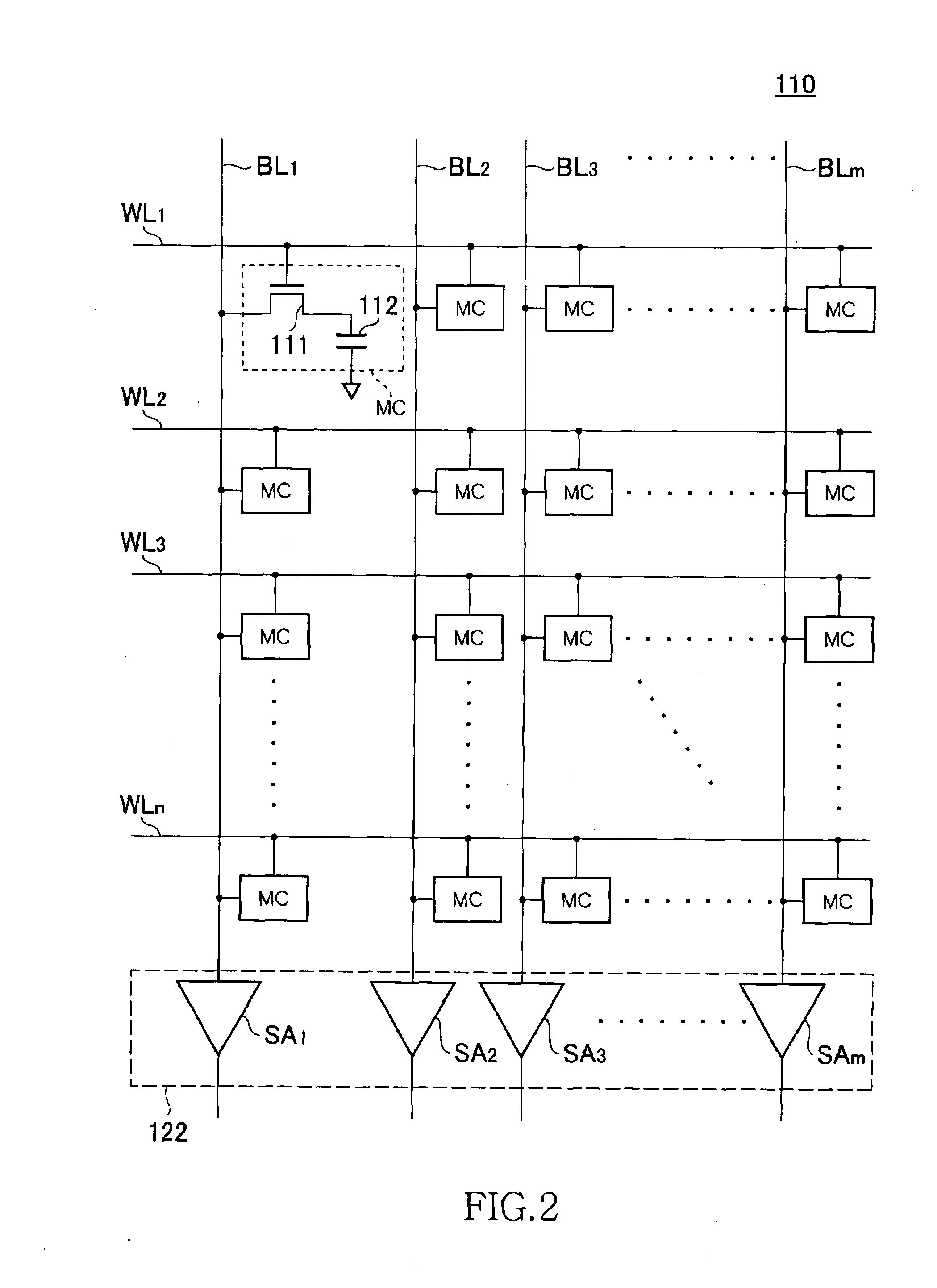Semiconductor memory device
a memory device and semiconductor technology, applied in the field of semiconductor memory devices, can solve the problems of easy change of power source voltage, large number of refresh defective cells contained in one chip, and easy increase of capacity, so as to reduce power consumption during self-refresh time, effectively relieving refresh defective cells
- Summary
- Abstract
- Description
- Claims
- Application Information
AI Technical Summary
Benefits of technology
Problems solved by technology
Method used
Image
Examples
first embodiment
[0038]As shown in FIG. 1, the semiconductor memory device 100 includes a memory cell array 110 having plural memory cells that need to hold information by the refresh operation. The semiconductor memory device 100 has a function (read function) of reading data stored in the address supplied via an address pin ADD, and outputting the read data via a data pin DQ, and a function (write function) of writing data supplied via the data pin DQ to the address supplied via the address pint ADD.
[0039]FIG. 2 is a circuit diagram schematically showing the configuration of the memory cell array 110.
[0040]As shown in FIG. 2, the memory cell array 110 has a matrix structure having plural word lines WL1 to WLn crossed with plural bit lines BL1 to BLm, and has a memory cell MC located at each intersection. Each memory cell MC includes a series circuit of a MOS transistor 111 and a capacitor 112. A drain of the MOS transistor 111 is connected to the corresponding bit lines BL1 to BLm, and a gate of ...
second embodiment
[0076]FIG. 9 is a block diagram showing a configuration of a semiconductor memory device 200 according to the
[0077]The semiconductor memory device 200 according to the second embodiment is different from the semiconductor memory device 100 according to the first embodiment in that the refresh cycle changing circuit 142 is replaced by a refresh cycle changing circuit 240. In other points, the semiconductor memory device 200 according to the second embodiment is the same as the semiconductor memory device 100 according to the first embodiment. Therefore, constituent elements that are the same as those in the first embodiment are denoted by like reference letters and numerals, and redundant explanations thereof will be omitted.
[0078]FIG. 10 is a block diagram showing a configuration of the refresh cycle changing circuit 240.
[0079]As shown in FIG. 10, the refresh cycle changing circuit 240 includes an address memory circuit 241 and a comparator circuit 242. The address memory circuit 24...
third embodiment
[0087]FIG. 12 is a block diagram showing a configuration of a semiconductor memory device 300 according to the present invention.
[0088]The semiconductor memory device 300 according to the third embodiment is different from the semiconductor memory device 100 according to the first embodiment in that the refresh cycle changing circuit 142 is replaced by a refresh cycle changing circuit 340. In other points, the semiconductor memory device 300 according to the third embodiment is the same as the semiconductor memory device 100 according to the first embodiment. Therefore, constituent elements that are the same as those in the first embodiment are denoted by like reference letters or numerals, and redundant explanations thereof will be omitted.
[0089]The refresh cycle changing circuit 340 generates a refresh cycle set signal RC3 including a digital value or an analog value of plural bits. While a detailed circuit configuration is not shown, a circuit including fuse elements correspondin...
PUM
 Login to View More
Login to View More Abstract
Description
Claims
Application Information
 Login to View More
Login to View More - R&D
- Intellectual Property
- Life Sciences
- Materials
- Tech Scout
- Unparalleled Data Quality
- Higher Quality Content
- 60% Fewer Hallucinations
Browse by: Latest US Patents, China's latest patents, Technical Efficacy Thesaurus, Application Domain, Technology Topic, Popular Technical Reports.
© 2025 PatSnap. All rights reserved.Legal|Privacy policy|Modern Slavery Act Transparency Statement|Sitemap|About US| Contact US: help@patsnap.com



